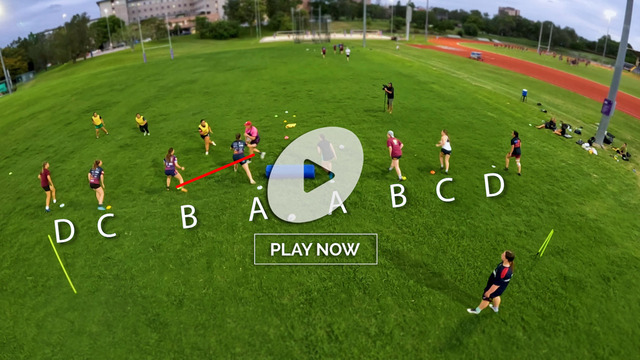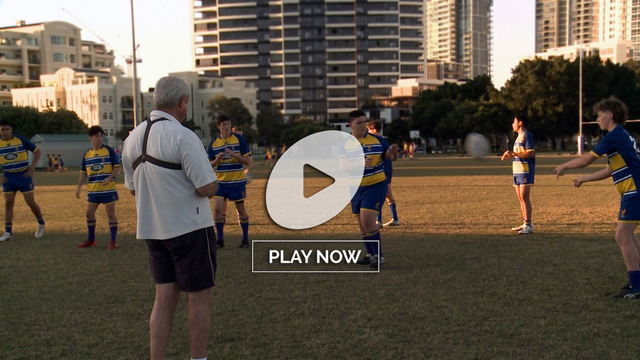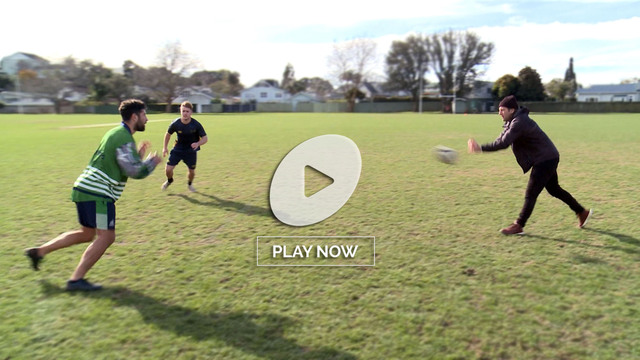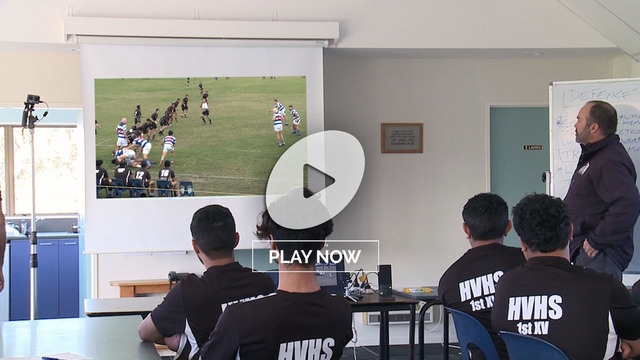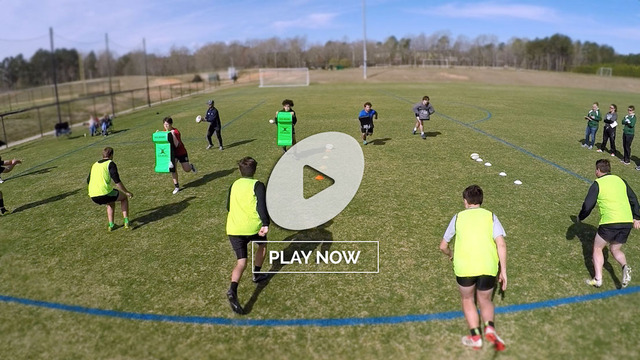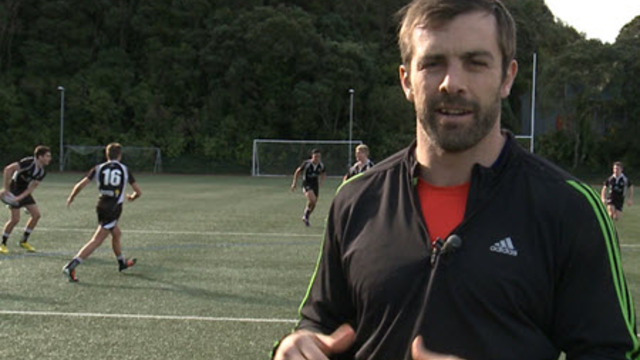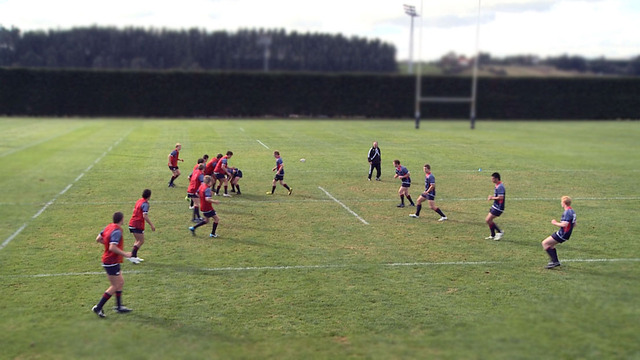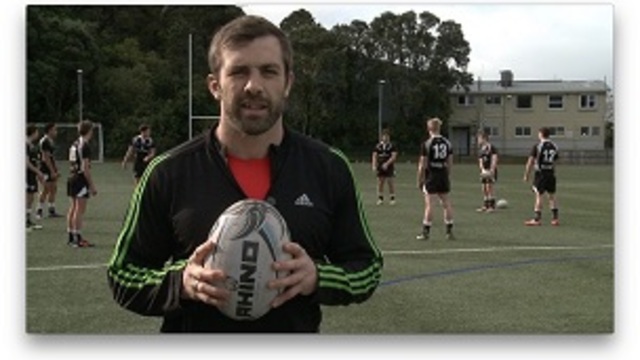Two-stepping your way out of trouble!
Who can watch the opening of Shane Williams’ excellent short coaching module on Sidestepping and Attack and not share the bewilderment of the defender who ends up on his backside as Shane makes his demonstration step – or laugh just as whole-heartedly as all the schoolboy spectators as the example unfolds?
Shane dips his shoulder one way, cuts the other off his left foot, and the schoolboy finishes with egg on his face, like so many of Shane Williams’ international opponents.
When the laughter subsides, the thinking begins, because this short coaching module is connected with an important future direction for Rugby Union. With the current upsurge in aggressive, high line-speed defences, the development of high-quality skills to beat an opponent in the tightest of spaces is at a premium.
American Football has been developing these skills for years. The following video gives some small idea of the work NFL teams invest in footwork drills
At 0:45, the coach on the video makes the statement that “When you see really good players do this drill, they should be able to brake themselves in one step, and change direction on the second step. If we have to brake down in four or five steps to make the cut, chances are that the defensive player has already closed the distance and made the tackle.”
So the necessity is to make a two-step cut (“or one-two chop”), making a sharp 90 degree angle as you break. Quick choppy steps are followed by an explosion as the ball-carrier makes his cut, forward movement is combined seamlessly with lateral movement.
It is easy to observe exactly this in Shane’s module on ‘beating the defender’. The main points Shane Williams stresses are:
• Manipulate or pull the defender away from the direction of your step, or use his own momentum to take him away from his point-of-balance.
• Make your cut late, “at the last minute”.
There were a couple of excellent instances of attackers performing the two-step cut in the recent Scotland versus Australia game at Murrayfield. Coincidentally both examples featured the opposing #13’s, Scotland’s Huw Jones and Australia’s Tevita Kuridrani.
Here is the finish to Scotland’s second try of the match end-on from behind the posts
When Huw Jones receives the ball from the Scottish tight-head prop Zander Fagerson at 27:22, the Australian defending him (#13 Kuridrani) is already one full body-width outside him, which means he will be trying to make the tackle square, or at an out-to-in angle.
As Jones catches the ball, his body is coming forward, with Kuridrani heading towards his inside shoulder:

But by the second step, Jones is already gone:



Huw Jones’ footwork satisfies the requirements of the ‘one-two chop’ in the NFL training video. He brakes in one step, and changes direction on the second. There is no chance for Kuridrani to adjust or shadow his movement.
At the same time, he is fulfilling the criteria in Shane Williams’ coaching module, using the defender’s momentum against him – Kuridrani is coming straight forward, through his inside shoulder – and Jones is making his cut at the last possible moment. This is high-end, top quality footwork.
Tevita Kuridrani had to wait until the 76th minute of the game to have his revenge:
The main difference between the two examples is that the Scotland defender (#22 Peter Horne) is coming up on the inside half of Kuridrani’s body, rather than square or on the outside half. As he receives the ball on a slight inward angle, Kuridrani instinctively knows that any movement to the outer will force the tackler to reach for him with the arms only:

Kuridrani’s second step is the cut outside, but with less pressure on the move than there was in the Huw Jones example:



He is able to add a fend on Horne’s exposed left shoulder as he moves away into open space to score Australia’s match-winning try.
Summary
The claustrophobic effect of modern high line-speed defences makes drills and training time devoted to faster footwork essential.
American Football drills are well-advanced in this respect, and there is much common ground between the training philosophy in the Gridiron video and Shane Williams’ short coaching module.
Both demonstrate the need to combine forward and lateral movement in the space of two steps, rather than four or five; to use the defender’s momentum or angle against him; and to make the cut as late and explosive as possible, literally “at the last minute”.
Shane Williams was always one of the smallest men on the field in his international career, but what he lacked in size he more than made up for in elusiveness and ‘quick feet’. As the saying goes, “the small man may pass more easily through the door”, and there is a lesson in there for the future of rugby.
.jpg)




